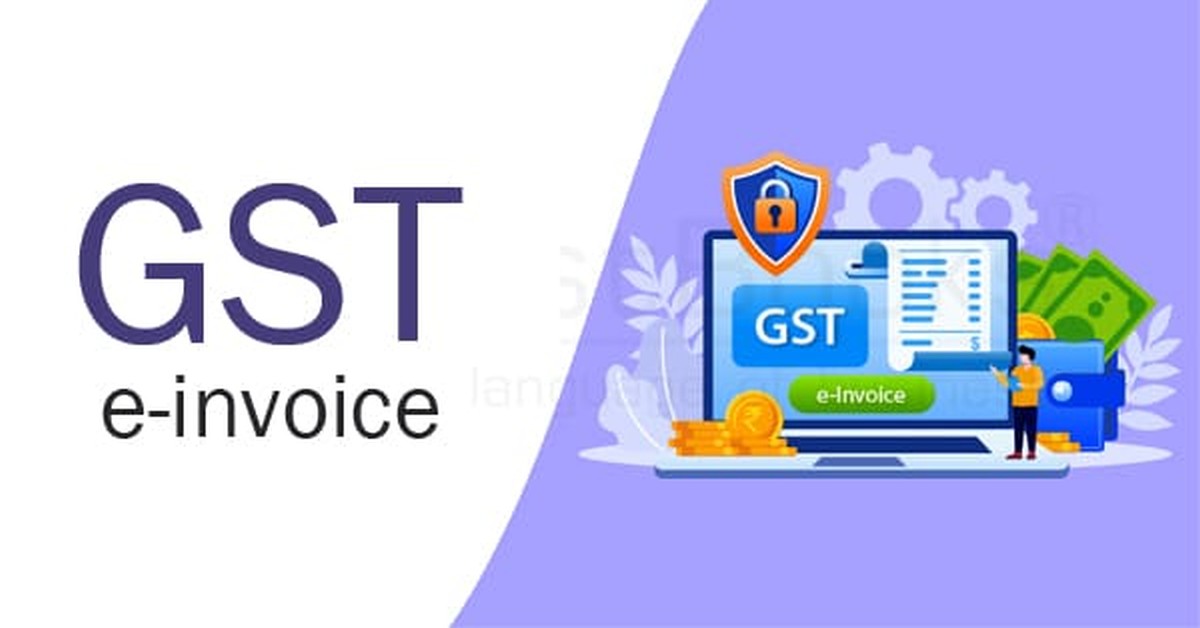Generation of e-invoice is mandatory for certain classes of taxpayers, as notified by the Government.
These taxpayers are required to prepare & issue their e-invoices by reporting their invoice data in the prescribed format and reporting the same on the Invoice Registration Portal (IRP). Invoices reported successfully on the IRP are given a unique Invoice Reference Number (IRN). The documents (invoices, debit notes, credit notes) reported on the IRP are then transmitted electronically to the GST system and are auto-populated in the respective tables of GSTR-1.
What are the Documents that are reported? What is the time gap between the generation of invoice to auto population?
The documents such as invoices, debit notes, credit notes are reported on the IRP* are transmitted electronically to the GST system two days after generation & are auto-populated in the respective tables of the GSTR-1 of such taxpayers.

Where do these auto populated records appear?
These auto-populated documents appear as Saved records in GSTR-1 of the taxpayers, with the source of the document mentioned as 'E-invoice' & IRN* details also mentioned against every record.
What happens "If the taxpayer reports the document (invoice, debit note, credit note) on the IRP after filing GSTR-1 for that period?"
Then the e-invoice will not be auto-populated in any subsequent GSTR-1. The Excel file containing the e-invoice details can still be downloaded from the GSTR-1 dashboard for the tax period to which the document (invoice, debit note, credit note) pertains to.
What happens if the taxpayer reports the document (invoice, debit note, credit note) on the IRP after manually entering the document in GSTR-1?
The manually entered data will not be overwritten even if the GSTR-1 is not filed. The Excel file containing the e-invoice details can still be downloaded from the GSTR-1 dashboard of the tax period to which the document (invoice, debit note, credit note) pertains. Since the document already exists in GSTR-1 and it is not auto-populated in GSTR-1 from IRP, a message regarding this will be mentioned in the Excel file against the specific document(s).
Example: Invoice No 001/2022 dated has been manually entered in GSTR 1on 10th December, 2021 (before the due date i.e 20th December,2021) and is reported on Invoicing Reporting System on 12th December,2021. The same invoice is manually entered shall not be overwritten.
Cancellation of e-invoices on the IRP*:
Documents reported earlier on the Invoice Registration Portal (IRP) can be cancelled within a specified period on the IRP. Upon cancellation, the cancellation data flows to the GST system and all cancelled document(s) which were appearing as saved documents in GSTR-1 are deleted from the GSTR-1. The status of the document will be updated in the Excel file, from Valid to Cancelled.
What is E-invoice data on excel format?
An additional facility of consolidated download of all documents auto-populated from Invoice Registration Portal (IRP) is made available in GSTR-1 dashboard. This Excel file will be available on the GSTR-1 dashboard for the tax-period to which the document (invoice, debit note, credit note) pertains to. This file could be downloaded from the 'Download details from e-invoice (Excel)' button on GSTR-1 dashboard.
Contents of the Excel Format
- Invoice Reference Number (IRN) - 64 string hash
- Date of Invoice Reference Number (IRN date)
- e-invoice Status - Valid / Cancelled
- Date of auto-population/deletion upon cancellation - Date of auto-population into GSTR-1 in case of valid IRN, or, the Date of deletion in case of cancelled IRN, as the case may be.
- Error in auto-population/ deletion - Error description, if any.
Is the history of e-invoice downloaded available?
Taxpayers can use the link 'e-invoice download history' to view the list of last five downloaded files.
Supplies that are auto-populated in e-invoicing
- Taxable outward supplies made to registered persons including reverse charge mechanism.
- Credit and Debit Notes issued to registered and unregistered persons.
- Export Supplies.
Point to be Considered
Explanation: The tax period of GSTR-1 in which the e-invoice will be auto-populated will be as per the Document Date, irrespective of the date on which the document (invoice, debit note, credit note) was reported on the IRP & the IRN was generated
Example: Invoice No 001/2022 dated 25th October 2021 is reported on Invoice Reporting Portal on 10th November 2021. The e-invoice details will be reflected in GSTR 1 for the month of October and not for the month of November.
- *IRP- Invoice Registration Portal
- *IRN- Invoice Reference Number








 CAclubindia
CAclubindia
